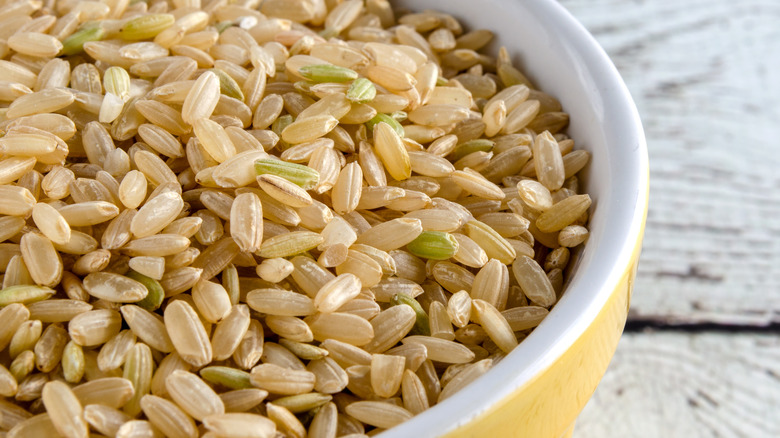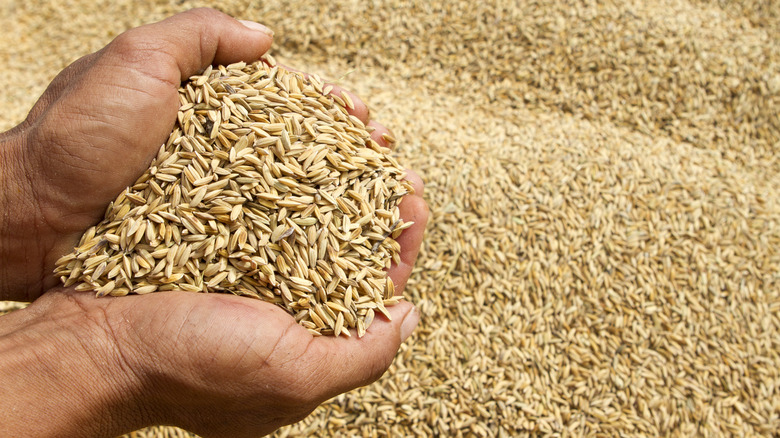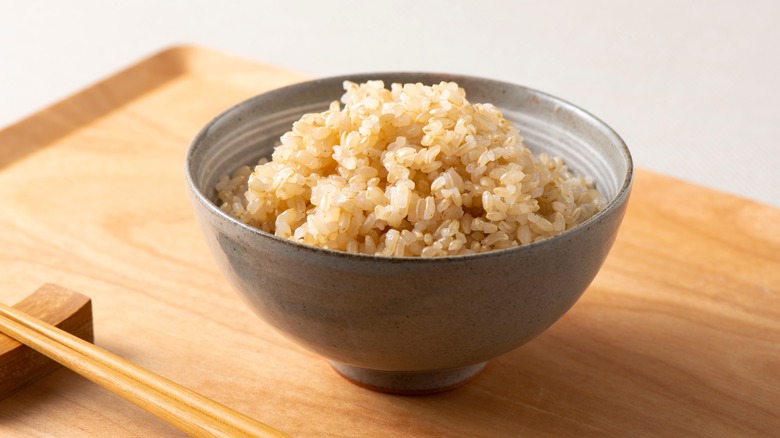No, Green Grains Aren't Rotting Your Brown Rice
There are many kinds of rice that come in different shapes, sizes, and colors. Given that rice is the primary crop and staple food for over half the world's population, you likely to already have a bag of this popular and versatile grain in your pantry. If you commonly buy brown rice, you may notice that its color doesn't always match the advertisement; most grains are tan, but some have a greenish hue. While a green tint can indicate spoilage in some foods, this is not the case with brown rice.
Unlike bread that can turn green when moldy, green rice is perfectly safe to eat. Its distinct hue comes from a natural compound called chlorophyll, not mold. These green grains are harvested before they have fully matured, much like green tomatoes and unripe bananas, but they are just as tasty and nutritious. According to Healthline, brown rice — including the green grains — is a good source of potassium, calcium, and manganese, which supports blood sugar regulation and bone development in the body.
How to know if your rice has gone bad
Rice belongs to the grass family and, like the common grass found in backyards and public parks, it is green when growing due to the presence of chlorophyll, the natural compound responsible for giving green plants their hue. Each grain on a rice stalk grows at its own pace, depending on the amount of sunlight it receives. Because stalks are harvested all at once, some green grains may end up in your bag of brown rice. Rather than focusing on the color, there are other indicators to check to ensure your rice is safe to eat.
First, smell your bag of rice; it should have a slightly earthy aroma, but should not smell unpleasant. Run your fingers through the grains to make sure they feel dry and do not clump together — condensation could be a sign of spoiled rice. While doing this, look for any dark spots that could be signs of actual mold, or the presence of insects.
Storing your rice and putting it to good use
While we often consider rice a durable pantry staple, it's important to remember that it comes from a plant and won't last indefinitely. Though rice may remain safe to eat well past its expiration date, its flavor and texture will degrade over time. To extend the shelf life of your uncooked rice, store it in an airtight container in a cool, dry place like your kitchen pantry. Shelf life also varies depending on the type of rice. Brown rice contains natural oils in its bran that can spoil after about six months. For this reason, it's advisable to store your brown rice in the refrigerator or freezer.
Now that you know the occasional green grain of rice is fine to eat and understand how to store your rice properly, enjoy exploring this grain's endless versatility! Whether you're making hot stone bibimbap, including it in a salad, using it as stuffing, or incorporating it into another dish, there are countless creative rice dishes to try.



